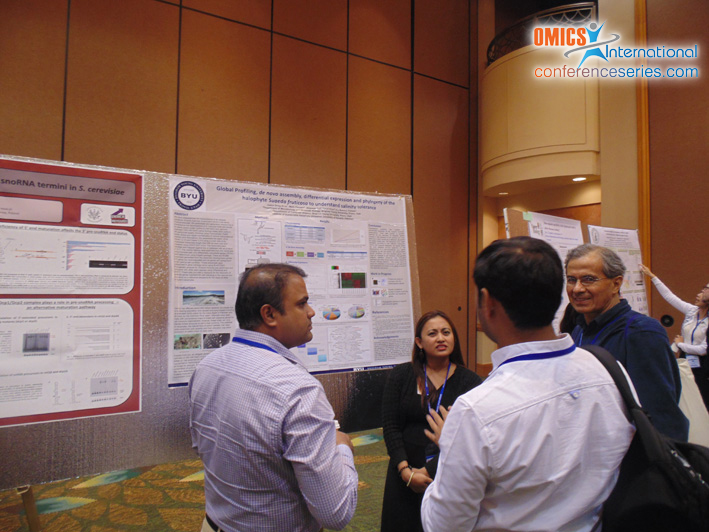
Vishwanath Sollapura
Agriculture and Agri-Food, Canada
Title: Comparative transcriptome analysis between mature pollen and stigma of Brassicaceae and Triticeae crop species.
Biography
Biography: Vishwanath Sollapura
Abstract
Pollination is an important step in Angiosperm sexual reproduction that involves pollen adhesion, recognition, rejection/acceptance, hydration, germination, and other cell-cell interactions with the stigma (the female receptive tissue). A detailed knowledge of the transcriptomes of the mature pollen grain and stigma will help in further understand these interactions and identify the various molecular participants. This fundamental knowledge will in turn provide tools to enable molecular interventions aimed at managing pollination and thereby leading to improved sustainable crop production. We are currently working towards assembling high quality pollen and stigma reference transcriptomes for both dicots (Brassicaceae) and monocots (Triticeae) crops using next-generation sequencing of transcriptomes (RNA-seq). We report the results of transcriptome analyses performed on the mature pollen and stigma of Brassica carinata and Triticale (x Triticosecale Wittmack), two crops with potential applications as bio-industrial platforms. Both Illumina and 454 sequencing were performed generating about 100 million (100 bp lengths) and 1 million (400 bp lengths) paired reads per sample respectively. The RNA-seq analysis was carried out using CLC genomics workbench 7.0 (Qiagen Inc.). Comparisons of transcript profiles between pollen and stigma of B carinata and Triticale and the contribution of polyploidy to reproductive gene expression will be presented. The reference transcriptome generated for B carinata and triticale will facilitate the study of other members of the Brassicaceae (e.g. B. napus, B. oleracea, B. rapa) and Triticeae (wheat, barley, rye) which together represent the most cultivated crops in Canada


